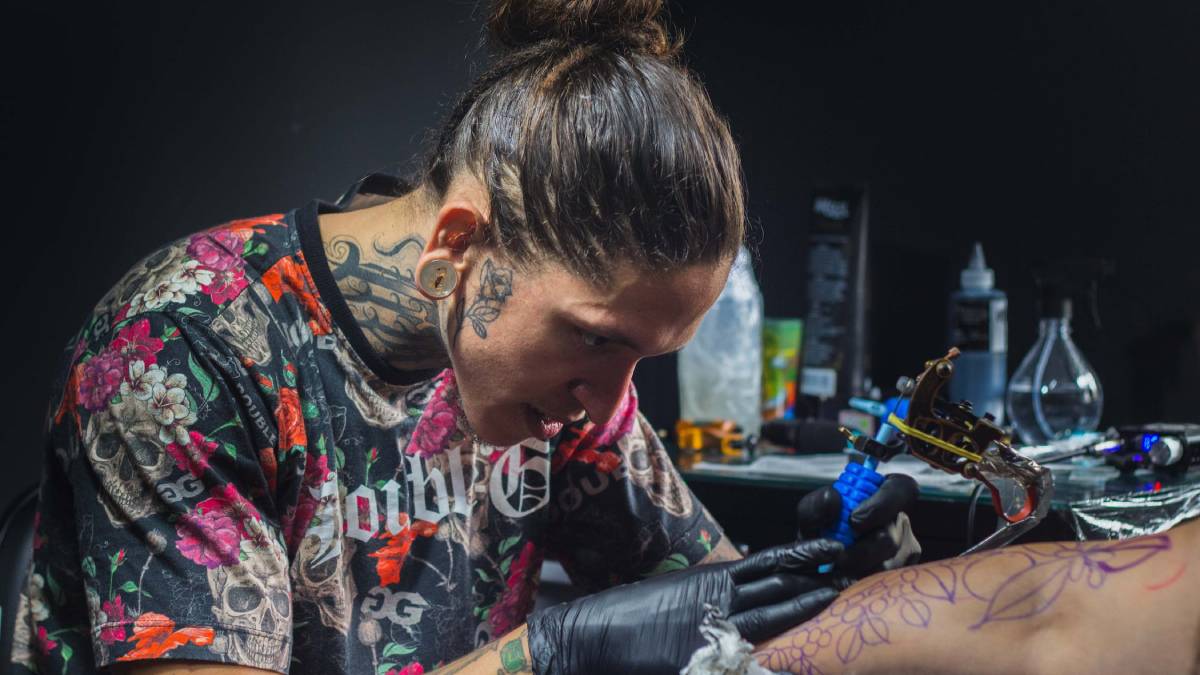You may have noticed that tattoo artists often wrap their machines in plastic, but have you ever wondered why they do so? In this article, we will delve into the necessity behind this practice, the materials used for wrapping, the science that preserves sterility, the reasons for taping cords and green soap bottles, and the significance of grip tape in the world of tattoo artistry.
Why do tattoo artists wrap their machines?
Tattoo artists are meticulous about maintaining a clean and sterile environment while working with their clients. This diligence extends to their tattoo machines, which are at the heart of the entire process. The wrapping of tattoo machines serves several critical purposes:
- Prevent cross-contamination
- Protect the tattoo machine itself
- Reduces ink splatter
First and foremost, it helps prevent cross-contamination. Tattoo machines come into direct contact with a client’s skin, and any exposure to blood or bodily fluids can pose a significant health risk. By wrapping the machine, tattoo artists create a barrier that reduces the chances of contamination, ensuring the safety of both the artist and the client.
Secondly, wrapping the machine also protects the machine itself. Tattoo machines are intricate pieces of equipment with various components, including needles, grips, and coils. These components can be delicate and expensive, and protecting them from ink splatters and contaminants helps prolong the lifespan of the machine.
Additionally, wrapping the machine contributes to a cleaner workspace. Tattooing can be a messy process, with ink splatter and residue being common byproducts. By wrapping the machine, artists keep the work area more organized, which is not only aesthetically pleasing but also conducive to focus and precision.
By wrapping the machine in plastic, tattoo artists create a physical barrier that protects it from contact with blood, ink, and other bodily fluids. There is more to it than just the physical barrier. Plastic wrap also prevents airborne contaminants, like dust and bacteria, from settling on the machine’s surface.
This barrier effect is crucial in preventing cross-contamination. Tattoo artists understand that even the tiniest lapse in sterility can lead to infections and complications for the client. Therefore, plastic wrap serves as a simple yet effective means of reducing these risks.
What are tattoo machines wrapped with?
Tattoo artists typically use plastic wrap for this task. The choice of plastic wrap is driven by its versatility, availability, and cost-effectiveness.
Plastic wrap is a widely available and affordable material. Tattoo artists need to replace the wrap frequently, making it essential that the material is both accessible and economical. Plastic wrap meets these requirements, making it a popular choice among artists.
The elasticity of plastic wrap is another significant advantage. It can be stretched and wrapped tightly around the machine, ensuring a secure fit that prevents any contaminants from seeping through. This elasticity also makes it easy to apply and remove when needed.
This video explains how you should wrap your tattoo machine – going over all of the necessary precautions an artist should take.
Why cords and green soap bottles need to be taped too
While plastic wrap is the most visible aspect of maintaining a clean and sterile tattooing environment, it’s not the only tool in the artist’s arsenal. Tattoo artists also pay close attention to other essential components, such as cords and green soap bottles, which need to be taped for similar reasons.
Tattoo machine cords are an often overlooked aspect of the tattooing process. These cords connect the machine to the power supply, and just like the machine itself, they come into contact with the client’s skin. To prevent cross-contamination, artists meticulously tape these cords in a way that ensures they don’t dangle or touch any surfaces that might be contaminated.
Green soap, a staple in the tattooing process, is used for cleaning and sanitizing the skin during and after tattooing. It’s essential that the green soap bottle is also taped, mainly to prevent it from being contaminated by contact with other objects or surfaces.
The meticulous taping of cords and green soap bottles showcases the commitment of tattoo artists to maintaining sterility and safety. It’s yet another layer of precaution to minimize any potential risks during the tattooing process.
Why tattoo artists use grip tape to wrap their machines
Tattoo artists use grip tape to enhance their grip on the machine, improving control and precision during tattooing. This is especially important after applying plastic wrap, which is hardly easy to hold onto.
The grip of the machine is typically made of metal or hard plastic. These materials can become slippery when they come into contact with ink or sweat, making it challenging for the artist to maintain a firm grip. Any tattoo artist will tell you how holding onto a tattoo machine can become really painful for the artist’s hand. Increasing the size and girth of the machine can help reduce this as you’re not going to be scrunching your hand up as much.
This provides the artist with a better hold, even when the grip becomes moist or covered in ink. The enhanced grip allows for smoother and more precise movements, which are critical for creating intricate and detailed tattoos. Two line tattoos, for example, likely demand a careful amount of control in order to be created carefully.


